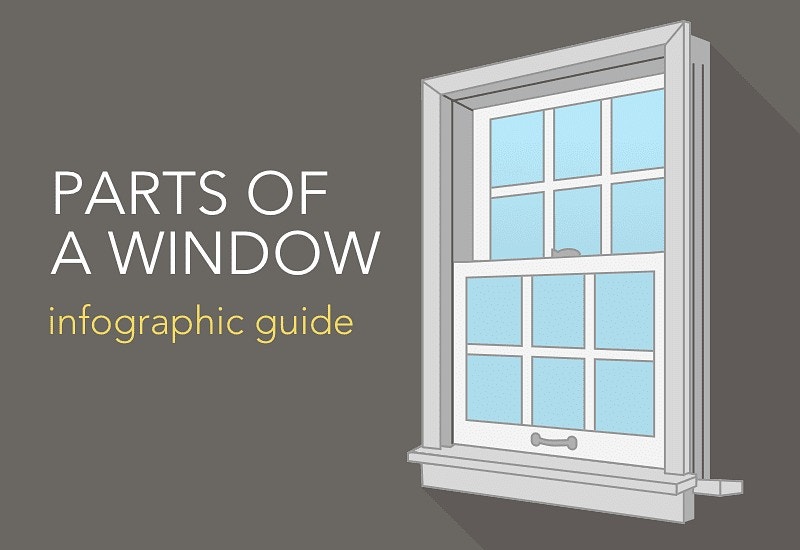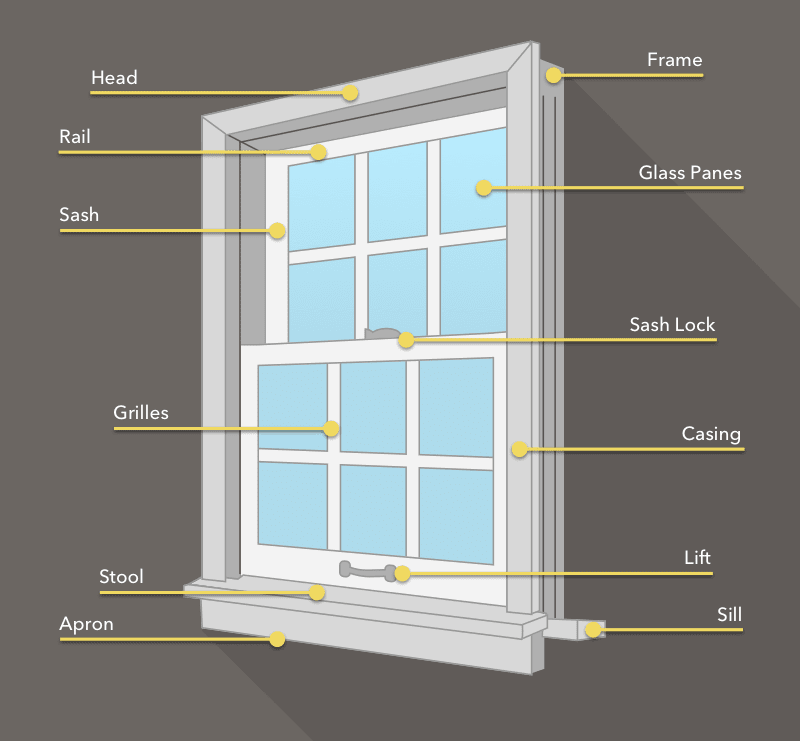A Guide to the Parts of a Window
Posted
on January 30, 2019

Replacing your windows can not only enhance your home’s aesthetic and improve curb appeal but also make your home more energy efficient and ensure more effective climate control.1
Before you start window shopping for the perfect style to complement your home, learning the lingo — which begins with defining the parts and components of a window — will help you work with manufacturers and installers to find the windows you need.

Parts of a Double-Hung Window
Frame - The framework that surrounds and supports the entire window system, which is comprised of the head, jamb, and sill.
Glass - The framed sheet of glass within a window frame.
Head - The main horizontal part that forms the top of the window frame.
Jambs - The main vertical parts that form the sides of the window frame.
Sill - Sometimes referred to as the “stool” of the window, the sill is the main horizontal part that forms the bottom of the window frame.
Jambliner - The strip placed on the sides of a window, providing a snug fit for the window sash.
Sash - The movable part of a window that holds the glass.
Rails - There are three rails on a double-hung window. The upper and lower rails, which together comprise the horizontal piece of a window sash. The check rail, in the middle of the window, is where the bottom part of the upper sash meets the upper part of the lower sash.
Balance - Normally spring-loaded, the mechanical device used in single- and double-hung windows to counterbalance the weight of the sash during opening and closing.
Lift - The handle for raising the lower sash.
Sash Lock - The locking mechanism that engages with the sash lock strike to reduce rattling.
Weep Hole - Individual openings in the window sill that enable water or condensation to escape.
Additional Window Features and Options
Fixed Panel - The inoperable panel of the window. This can be a decorative accent or sidelight, a fixed panel on a single-hung window, or the entire window can be fixed and inoperable.
Hinged Glass Panel - The glass panel that opens inward, allowing for ease of access to snap-in between-the-glass blinds, shades, and grilles.
Mullion - The major structural piece, either vertical or horizontal, that connects two or more windows together.
Grilles - A piece designed for decorative purposes, achieving the appearance of multiple glass panes by visually dividing the window panels.
Screen2 - A woven mesh of metal, plastic, or fiberglass that stretches over the opening of a window to allow for air to pass through.
Exterior Aluminum Cladding - The exterior wood parts of a window, which are covered with extruded aluminum and come with a factory-applied finish to help deter the elements.
Casing - The decorative molding or framing around a window that covers the space between the window frame or jamb and the wall.
Weatherstrip - A strip of resilient material for covering the joint between the window sash and frame in order to reduce air leaks and prevent water from entering the structure.
Lock Handle - A locking mechanism located on the jamb of a window.
Operator - A crank-operated device for opening and closing the window.
Window Material Options
Vinyl - The interior and exterior frame and sash surfaces are extruded rigid PVC.
Fiberglass - The window frame and sash are a five-layer pultruded fiberglass material.
Wood - Wood windows include window frame and sash made of solid wood.
Other Parts of Window Anatomy
Apron - Installed beneath the stool of the window, the apron is a decorative piece of trim that helps provide the interior of the window with a modern look and design.
Hinges - The location of the hinges varies based on the type of window. For a casement window, the hinges are on the jambs of the side that does not open. On an awning window, the hinges are on the head of the frame, since the window opens from the bottom. Conversely, for hopper windows, the hinges are on the sill, since that window opens from the top.
Spacers - Found at the top and bottom of the window frame, spacers hold together at least two or more panes of glass to help insulation.
1Source: Energy.gov
2Warning: Use caution when children or pets are around open windows and doors. Screens are not designed to retain children or pets.
Schedule a free consultation to find windows and doors for your home.
